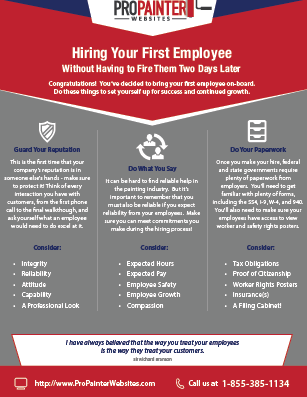Recognizing Seasonal Influences On Commercial Exterior Paint: Crucial Knowledge For Success
Recognizing Seasonal Influences On Commercial Exterior Paint: Crucial Knowledge For Success
Blog Article
Content Author-Regan Whalen
When you're planning a commercial outside painting project, seasonal factors can make or damage your outcomes. You'll want to think about how temperature and humidity effect paint application and drying times. Picking the appropriate period can guarantee your paint sticks correctly and lasts much longer. But which seasons are absolutely the best for this kind of job? Let's explore the crucial elements that can influence your project's success.
The Influence of Temperature Level on Paint Application
When you're planning a commercial outside paint project, the temperature level can substantially affect how well the paint adheres and dries out.
Ideally, you wish to paint when temperature levels vary between 50 ° F and 85 ° F. If it's too cold, the paint might not cure correctly, bring about issues like peeling or breaking.
On the flip side, if it's also warm, the paint can dry out as well rapidly, protecting against appropriate attachment and resulting in an irregular finish.
You ought to likewise think about the moment of day; early morning or late afternoon provides cooler temperatures, which can be much more positive.
Constantly examine the maker's suggestions for the particular paint you're using, as they usually provide advice on the suitable temperature level range for ideal results.
Moisture and Its Impact on Drying Times
Temperature isn't the only ecological factor that influences your industrial outside paint project; humidity plays a substantial duty too. High humidity degrees can slow down drying times substantially, impacting the total quality of your paint job.
When the air is filled with wetness, the paint takes longer to heal, which can cause concerns like bad adhesion and a higher danger of mold development. If you're painting on a particularly moist day, be planned for prolonged wait times in between layers.
It's crucial to monitor regional weather conditions and plan accordingly. Preferably, go for https://www.forbes.com/sites/nomanazish/2023/01/28/how-to-make-home-painting-less-stressful/ in between 40% and 70% for ideal drying out.
Keeping these factors in mind ensures your project remains on track and provides a lasting finish.
Best Seasons for Commercial Exterior Painting Projects
What's the most effective season for your business external paint projects?
Springtime and very early fall are generally your best options. Throughout these periods, temperatures are light, and humidity degrees are commonly lower, developing perfect conditions for paint application and drying.
Prevent summertime's intense heat, which can trigger paint to completely dry also swiftly, leading to poor bond and finish. Likewise, winter months's cool temperatures can impede appropriate drying out and curing, risking the longevity of your paint task.
shutter painting for days with temperatures in between 50 ° F and 85 ° F for optimum results. Remember to examine the regional weather forecast for rain, as wet conditions can spoil your job.
Preparation around these aspects ensures your paint job runs smoothly and lasts longer.
Final thought
In conclusion, preparing your commercial outside paint jobs around seasonal factors to consider can make a considerable distinction in the outcome. By scheduling job during the suitable temperature levels and humidity levels, you'll guarantee much better attachment and drying times. Bear in mind to keep an eye on local weather prediction and pick the right time of year-- springtime and very early autumn are your best choices. Taking these steps will certainly help you achieve a resilient and expert surface that lasts.
